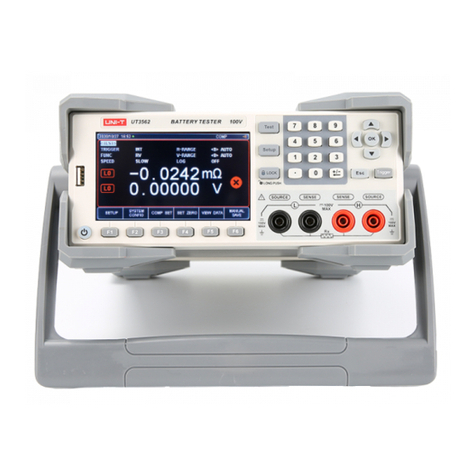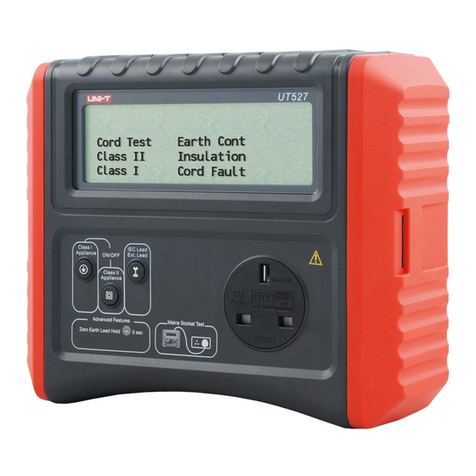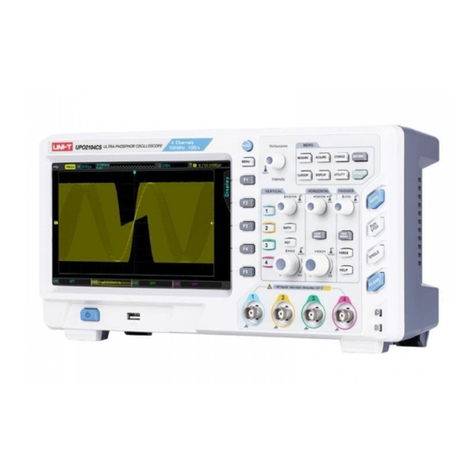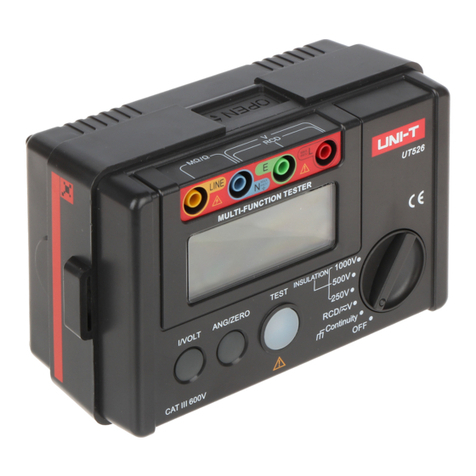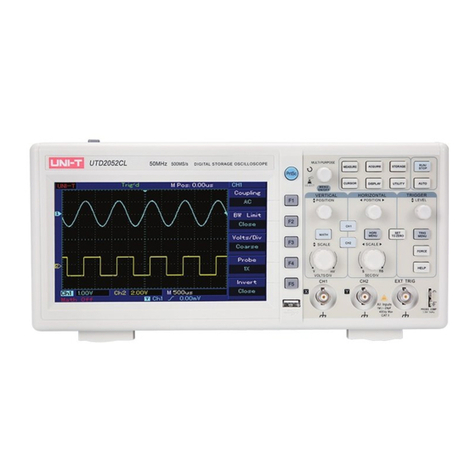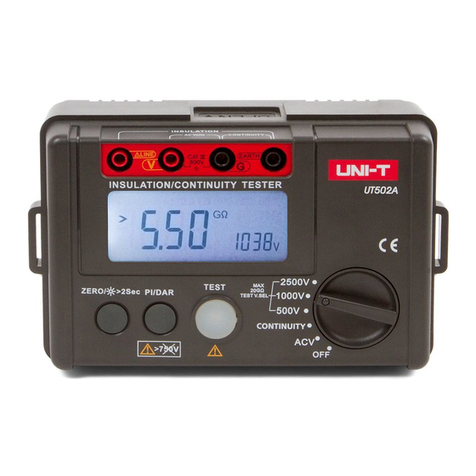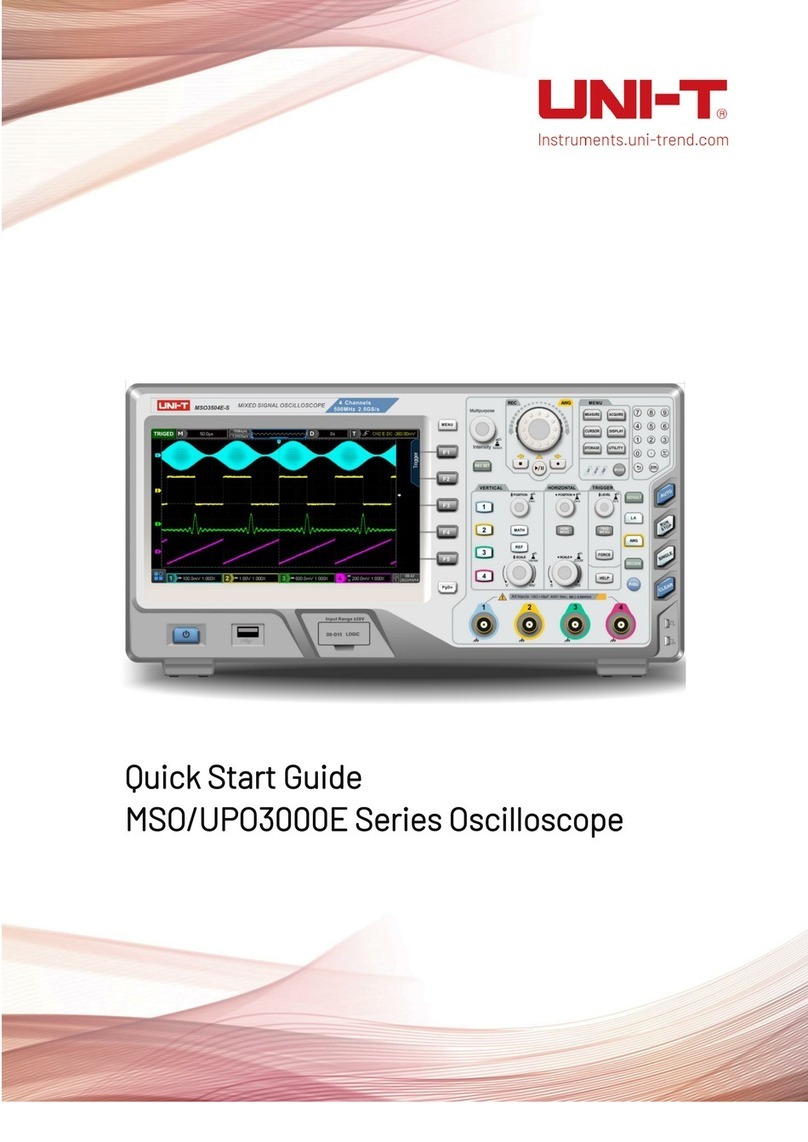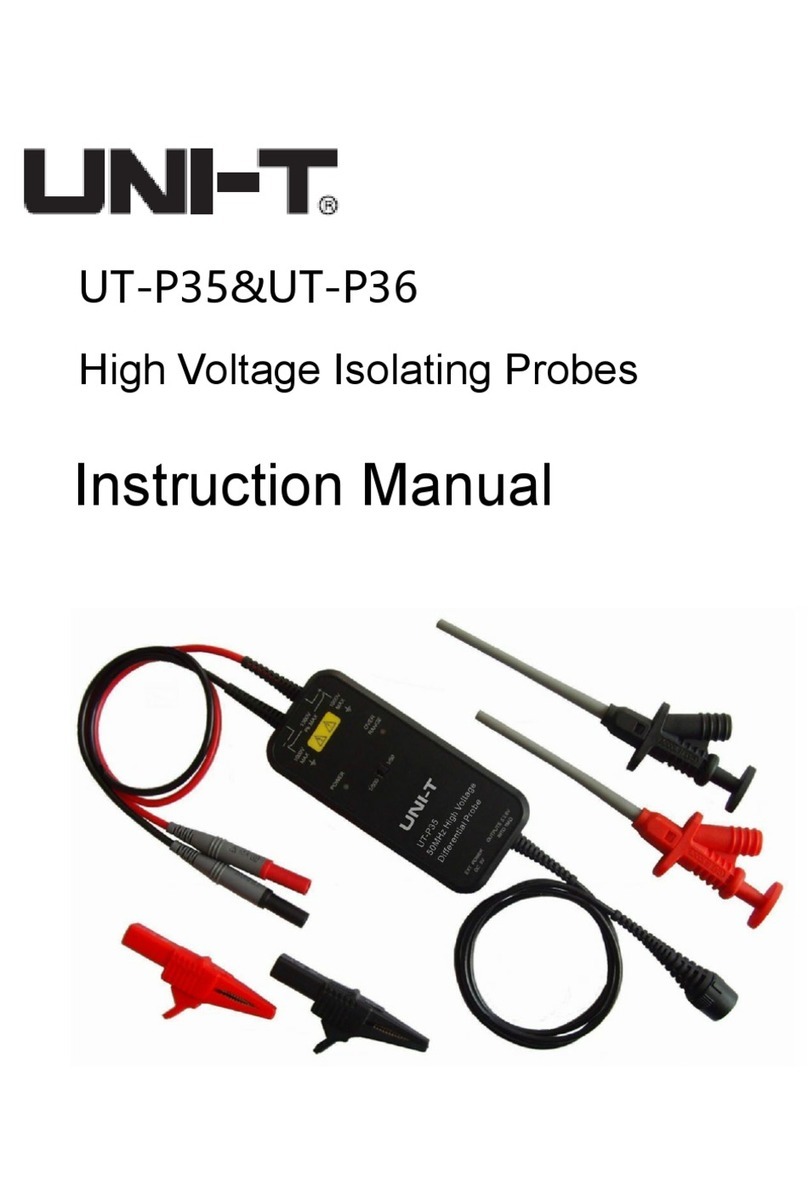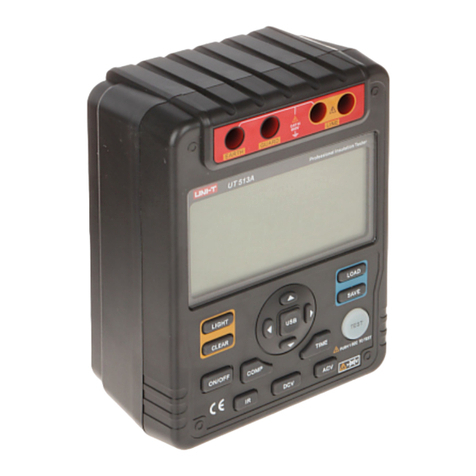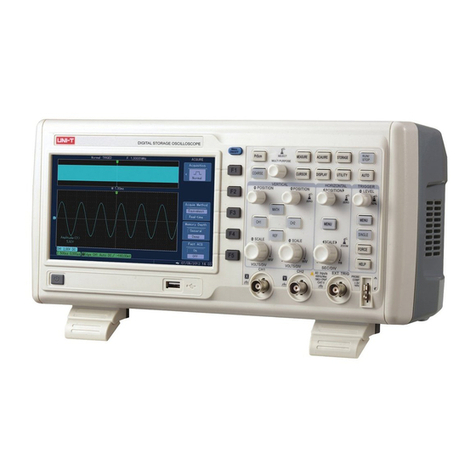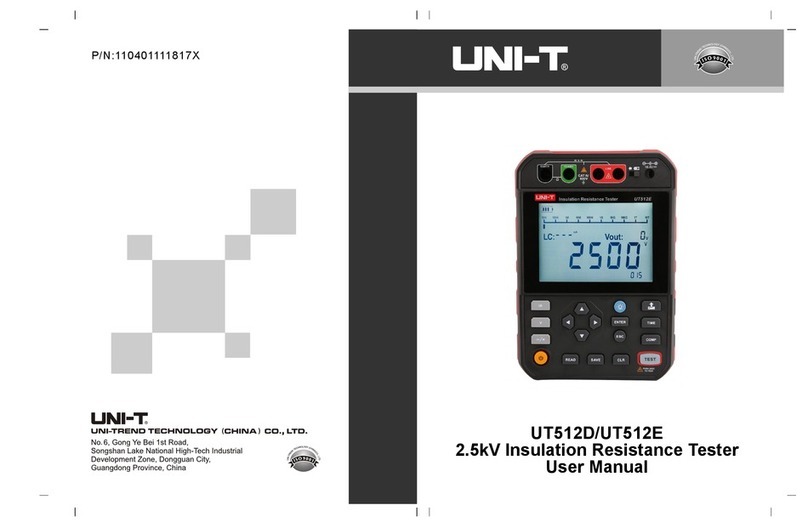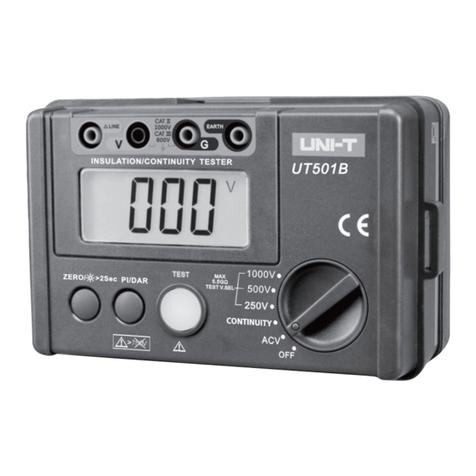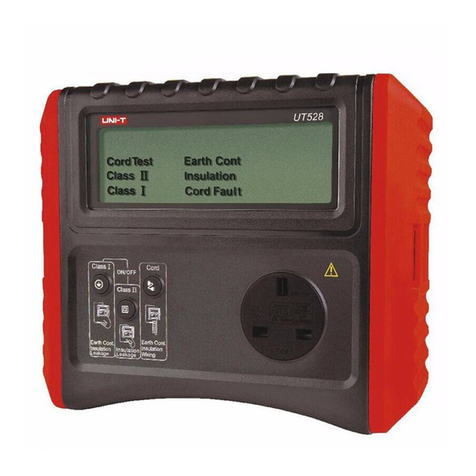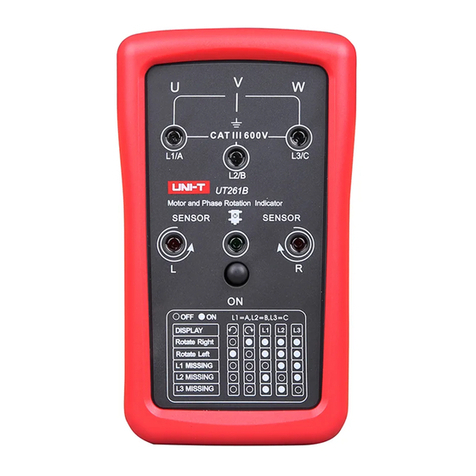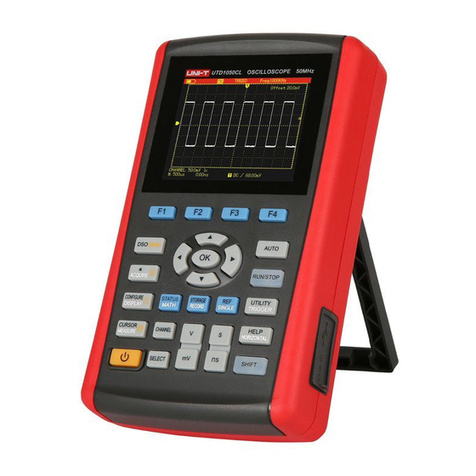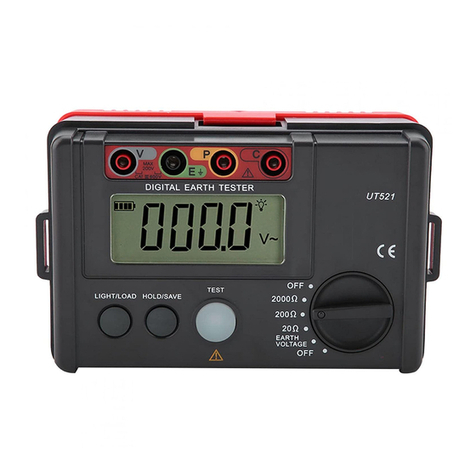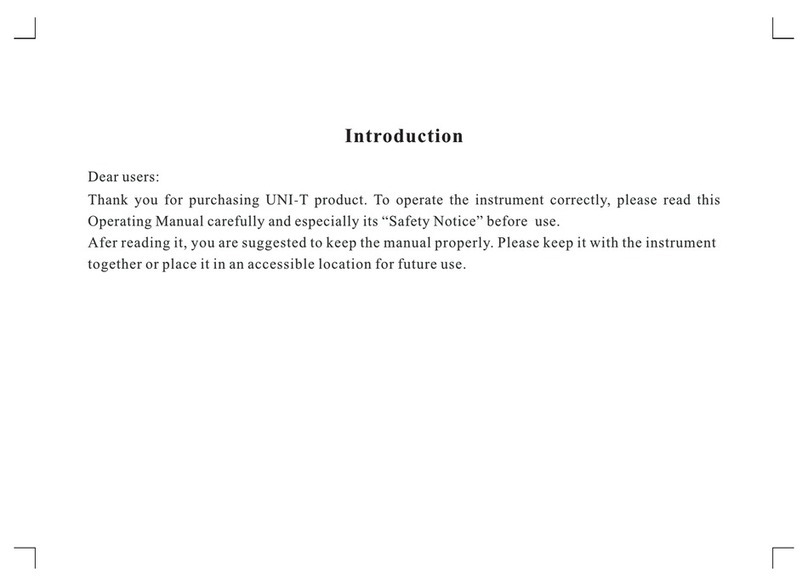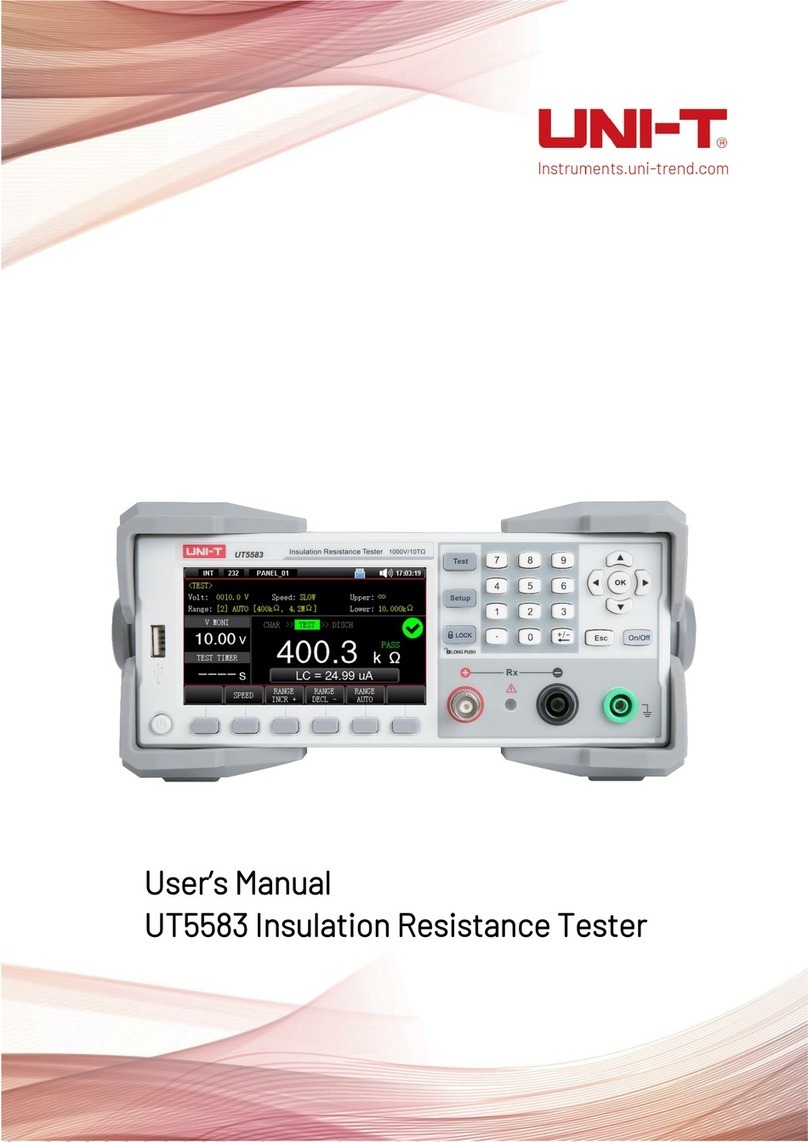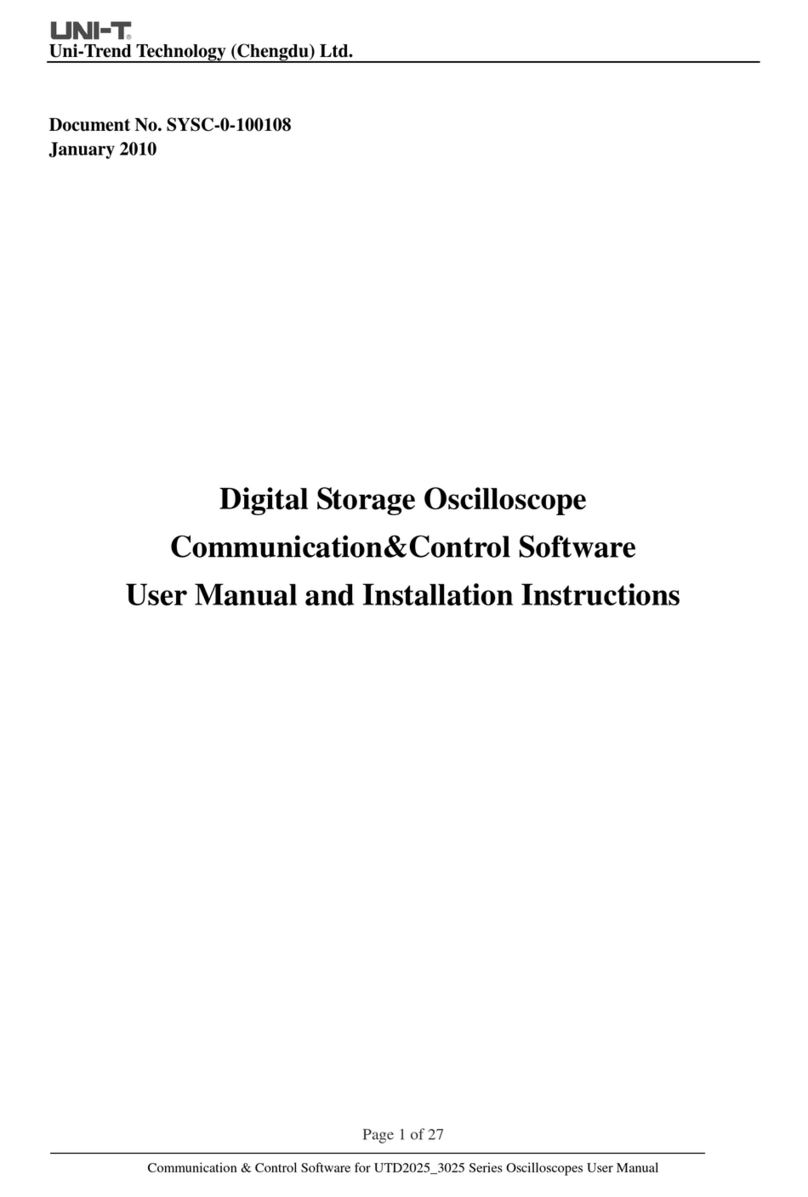I. Overview
UT501A Insulation Resistance Tester is designed with brand-new design and
combination of massive integrated and digital circuits; it can measure insulation
resistance, AC voltage, etc, and enjoys high degree of accuracy, stable performance,
easy operation and reliability. It is used for insulation resistance measurement for
insulation materials and various kinds of electric equipments such as transformer,
electric machines, cables, switches, electrical appliances, a ideal tool for electric
equipment maintenance, testing and inspection.
II. Safety Information
UT501A is designed and manufactured in compliance with: IEC61010-1 CATIII 600V,
Double Insulation and Pollution Degree 2 standards. Operate as specified in the manual,
otherwise the protection offered by the tester would be impaired.
Safety Symbols 1
Danger Identifies conditions and actions that may pose hazard to the
users.
Warning Alerts users to avoid electric shock.
Caution Identifies conditions and actions that may cause damage to
the instrument or affect accurate measurement.
Do not measure any AC circuit with voltages above 750V.
Do not measure in flammable places. Spark may cause explosion.
In case that the surface of the instrument is wet or the operator's hands are wet,
please do not operate this instrument.
Do not touch the electric conduction parts of test leads when testing.
Do not open the battery cover when testing.
When insulation resistance is measured, do not touch the electric wire under test.
Danger
Warning
Stop using the instrument if it works abnormally. For example: the
equipment is damaged or metal parts are exposed.
Operator must be careful when voltage exceeds 33Vrms, 46.7Vacrms or 70Vdc.
Such kinds of voltage may cause electric shock.
Do not replace the battery in wet conditions.
Ensure that all test wires are connected to the test ports of tester securely.
When opening the battery cover, make sure that the instrument is turned off.
Please read carefully and understand the manual before using the instrument.
Use the instrument as specified in the manual at any time and store the manual for
further reference.
When the instrument is testing, misoperation may lead to an accident and damage
of equipment.
Caution
Before testing insulation resistance, the circuit under test must be completely
discharged and completely isolated with other power circuits.
In case the test pen is damaged and needs to be replaced, use only the test leads
with the same model or identical electrical specifications.
When the battery indicator indicates that the power runs out, do not use the
instrument. Remove the battery and store the instrument if it is not in use for a long
time.
Do not store or use this instrument in heat, humid, flammable, explosive and strong
electromagnetic field environments.
Safety Symbols 2
The instrument has double insulation or reinforced insulation.
ACV AC Voltage
Ground
Rated Voltage
III. Technical Specification
Accuracy (a% reading + digits); calibration per year.
Ambient temperature: (23 5)
Environmental humidity: 45% to 75%
1. Insulation Resistance Measurement
100V 250V 500V 1000V
Test Range 0.00M ~5.5 G When it is about less than 4.0M buzzer
outputs alarming sounds . Notes: (100V) 0.00M ~100M
Opened Voltage DC100V 10% DC250V 10% DC500V 10% DC1000V 10%
Rated Test
Current
When load is
100K , the
rated testing
current is 0.9mA
~1.1mA.
When load is
250K , the
rated testing
current is 0.9mA
~1.1mA.
When load is
500K , the
rated testing
current is 0.9mA
~1.1mA.
When load is 1
M , the rated
testing current is
0.9mA ~1.1mA.
Shorted Current About less than 1.8mA.
Accuracy 0.00M ~99M 3%+5digits ; 100M ~5.5 G
5%+5digits
2. Voltage Measurement
AC Voltage
Test Range 30V~750V(50Hz/60 Hz)
Resolution 1V
Accuracy 2%+3digits
Display: LCD, 1999 count.
Low Battery Indication: .
Overload Indication: ">5.5GΩ" for insulation resistance measurement; "OL V" for
voltage measurement.
Autoranging.
Discharge voltage automatically.
Working conditions: 0 ~35 ; relative humidity is 75% or less; altitude: 2000m.
Storage conditions: -20 ~ 60 / relative humidity is 80% or less.
Dimensions: 150mm (L) 100mm (W) 71mm (D).
Power supply: alkaline batteries, 1.5V (5#) 6.
Weight: 0.5kg (with battery).
Accessories: test leads, instruction manual, carrying case, gallus.
Backlight, suitable in dark site.
Red warning light (warning light is on when high voltage outputs).
IV. Tester's Structure (See Diagram 1)
1. EARTH : Insulation resistance input jack.
2. G: Negative voltage input jack.
3. V: positive voltage input jack.
4. LINE: Insulation resistance input jack(high voltage output)
5. LCD screen
